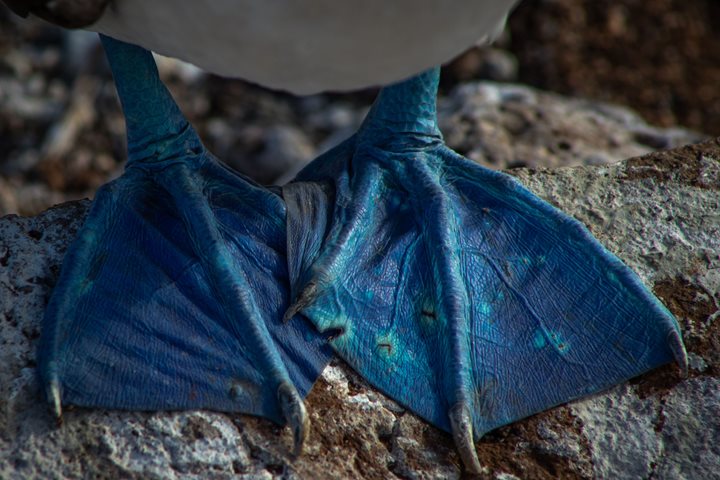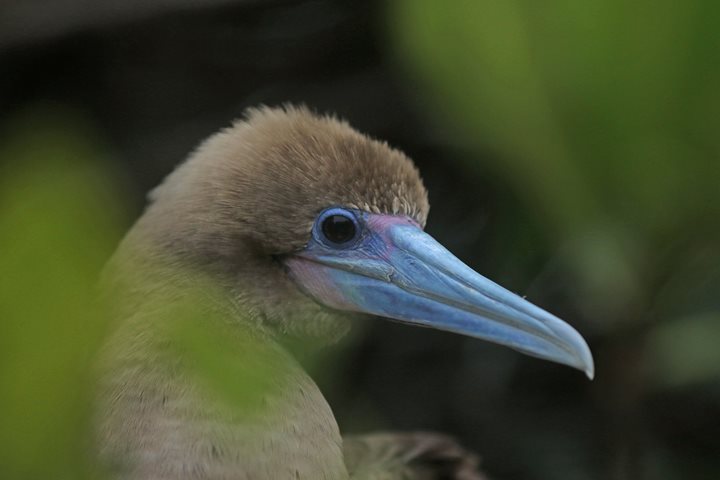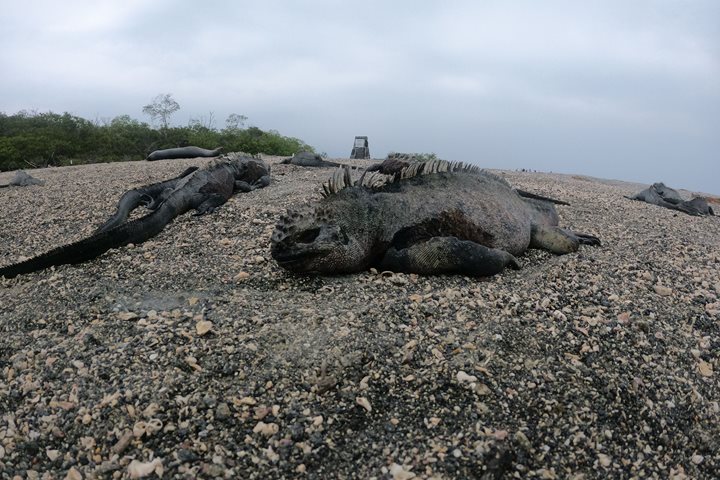It was now the time to leave the wilderness behind and follow the steps of civilization development. We soon arrived to the largest town in the enchanted archipelago and it was time to explore the breeding center of the Galapagos National Park Service, and its headquarters.
After a dry landing at a concrete dock, we entered the park service facilities and encountered many of the titanic Galapagos giant tortoises. It was sunny, but many of these reptiles were eating at this time of the day. The facilities of the breeding center, besides helping to restore the dynasty of the giant tortoises, also helps to promote environmental education to the locals that visit this area during the week.
After watching the big male dome shaped shell tortoises, we headed to another corral, where a male giant tortoise that was brought back to the islands from the San Diego Zoo, is nowadays the big star among the many conservation projects. He is known to be the one that helped save the species from Espanola Island from its own extinction. After several years, Diego – along with two other males and 12 females – have over 1800 neonates repatriated to Espanola. This male tortoise is now called “Super Diego.”
We rode on a bus for about 30 minutes to get to the highlands, where we visited a sugar cane press. Some of us chose instead to bike along the paved road for about 4 miles to get to this place, where we learned about the coffee making process, and other products from the sugar cane juice. It was interesting to see how some sweet juice can turn into some strong white lightning alcohol. I think this visit was a nice taste of the local flavor to learn how some of the local families have developed their own processes to make these products.
After lunch we got to see many giant tortoises in the wild. Huge male giant tortoises were found grazing along the greenery of the humid zone at the highlands of Santa Cruz. We found a couple of adult giant tortoises mating in the bushes for several minutes. We are heading into the mating season of these reptiles. As we walked around the farmlands, pintail ducks were enjoying the murky water of the rain water ponds. It was a completely different ecosystem and landscape once up in the highlands. All of the sudden we left the dry looking arid zone for a new world of green and lush everywhere. At the end we hiked into a lava tube and learned more about the geological structure of places like this. Many interesting features once inside made us feel amazed by exploring the Galapagos below the tree roots.
Although it was raining for a few minutes, the rain soon went away and we continued to explore out in the wild.

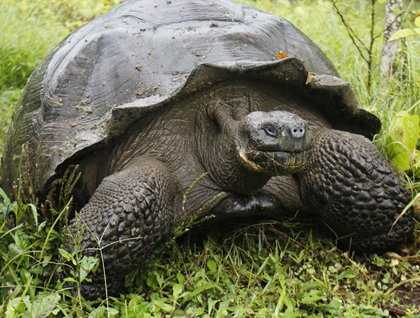

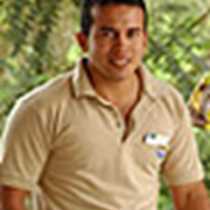

.jpg?width=106&height=85&mode=crop&scale=both&quality=50)

